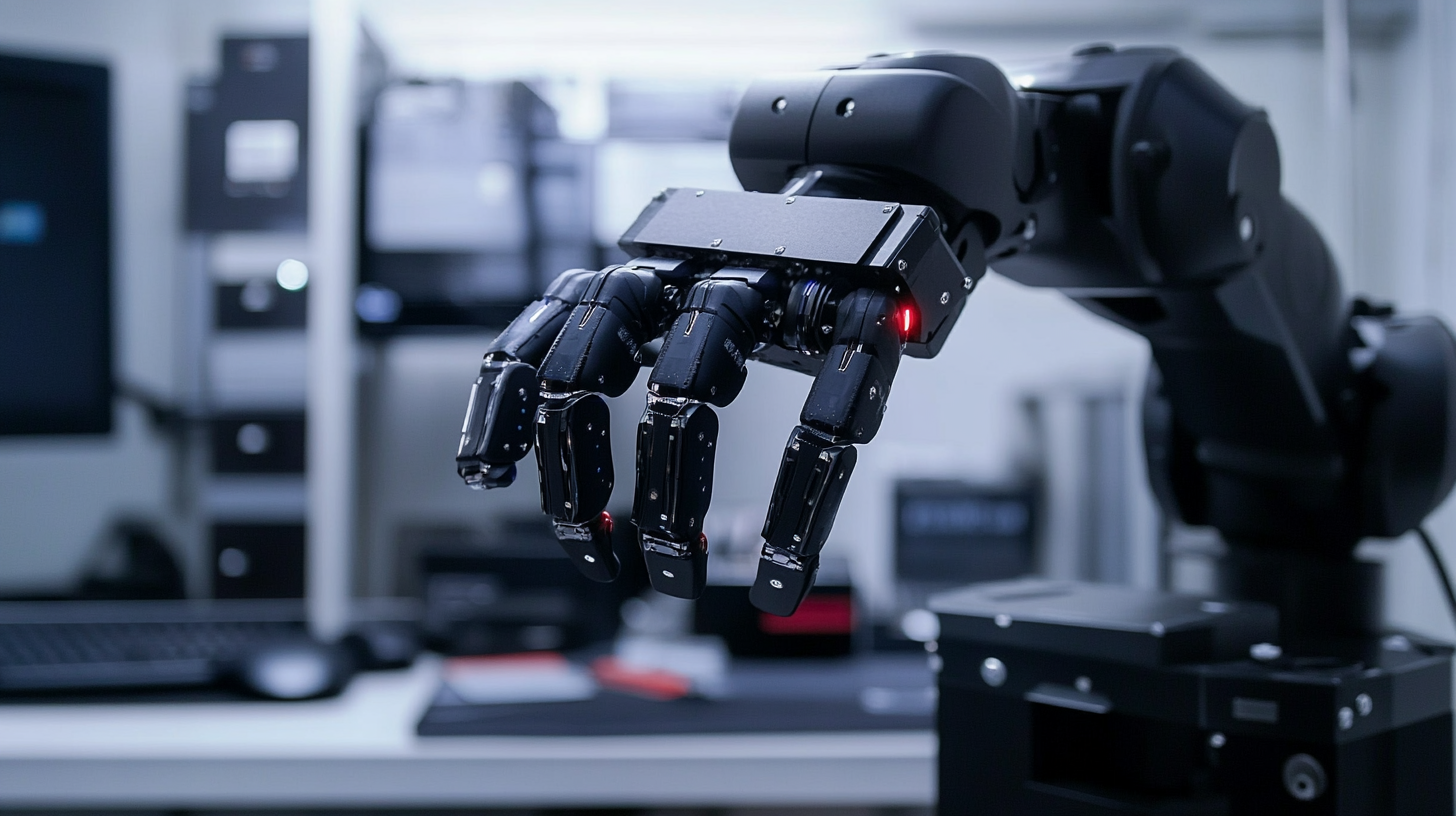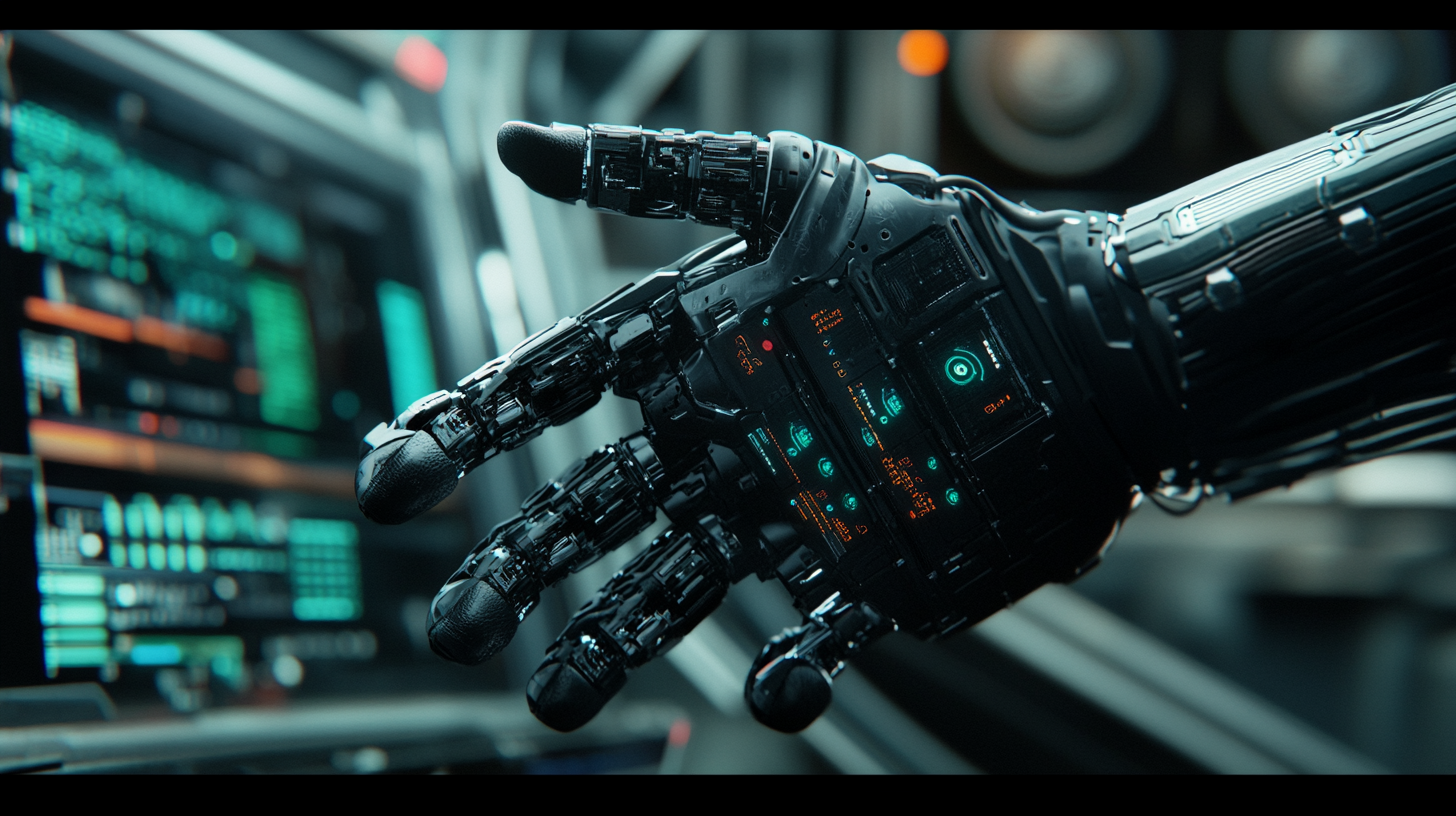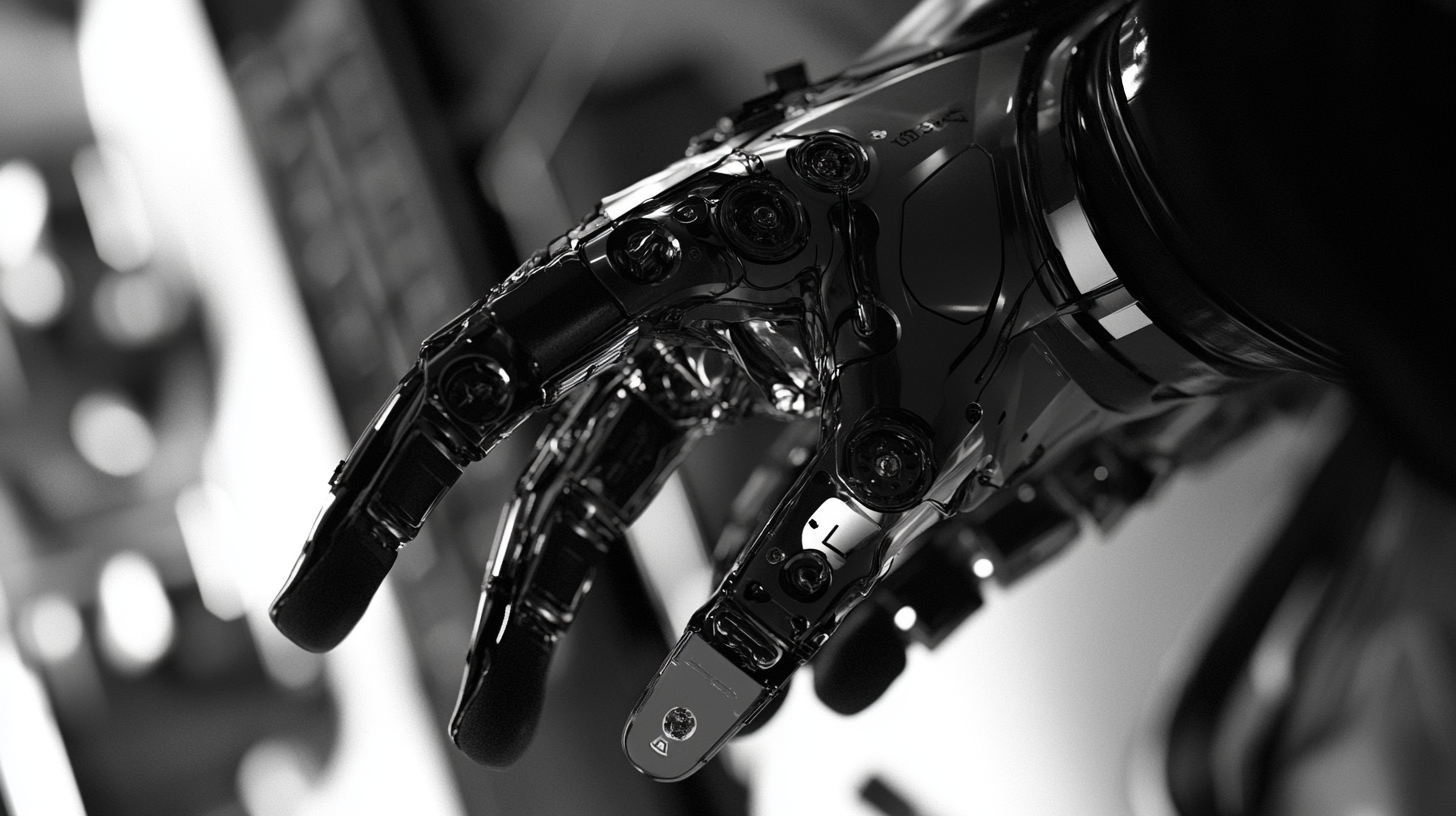Comprehensive Insights into the Future of Robotic Hand Technology for Global Buyers
The rapidly evolving landscape of robotic technology has garnered significant attention from industries across the globe, particularly in the realm of robotic hands. According to a recent report by Markets and Markets, the global robotic hand market is projected to grow from USD 1.5 billion in 2021 to USD 5.8 billion by 2026, representing a remarkable compound annual growth rate (CAGR) of 31.2%. This growth can be attributed to advancements in artificial intelligence, machine learning, and sensor technology, which are enabling robotic hands to perform increasingly complex tasks with precision and dexterity. As organizations seek to enhance productivity and innovation, the demand for sophisticated robotic hand solutions is set to surge, fostering a new era of automation.
As we look toward the future, understanding the implications of this technology is essential for global buyers seeking to invest in robotic hands. The integration of advanced features such as haptic feedback, adaptive gripping, and the ability to learn from human interactions positions robotic hands as game changers across various sectors, including healthcare, manufacturing, and warehousing. A study conducted by ResearchAndMarkets highlights that more than 70% of businesses in the manufacturing sector are likely to adopt robotic hands to streamline operations and improve safety. This blog will delve into the comprehensive insights surrounding the future of robotic hand technology, equipping buyers with the knowledge necessary to make informed investment decisions in this transformative field.

The Evolution of Robotic Hand Technology: Key Milestones and Innovations
The evolution of robotic hand technology has been marked by significant milestones and groundbreaking innovations that have transformed the landscape of robotics. In the early stages, robotic hands were primarily rudimentary mechanisms designed for basic tasks in manufacturing and assembly lines. The focus was on functionality over dexterity, resulting in limited capabilities. However, as technology advanced, researchers began to explore biomimetic designs that mimic human dexterity, leading to the development of articulated robotic fingers that can grasp and manipulate objects with remarkable precision.
The introduction of advanced materials and sensors played a crucial role in the transformation of robotic hand technology. With the advent of soft robotics, engineers have successfully created hands that can adapt to the shapes and textures of various objects, enhancing their usability in diverse applications. Innovations like tactile sensors and artificial intelligence algorithms have further improved the ability of robotic hands to perform complex tasks, including delicate operations in surgery and intricate assembly in electronics manufacturing.
Moreover, the integration of 3D printing has revolutionized the customization of robotic hands, allowing for cost-effective solutions tailored to individual needs, particularly in prosthetics. This advancement has not only increased accessibility but also opened new avenues for personal expression and functionality. As we look to the future, the continuous evolution of robotic hand technology promises even greater advancements, paving the way for more intelligent, responsive, and versatile robotic systems that can seamlessly interact with human environments.

Exploring the Applications of Robotic Hands Across Various Industries
The applications of robotic hand technology are vast and varied, impacting multiple industries and revolutionizing how tasks are performed. From industrial automation to healthcare, the integration of AI and IoT is driving innovation and increasing efficiency. As of 2025, the robotics industry is projected to undergo significant transformations, with a report indicating that the soft robotics market alone, valued at approximately USD 1.89 billion in 2024, is expected to grow at a staggering CAGR of over 34.8% from 2025 to 2034. This growth is largely fueled by the demand for more flexible and adaptable robotic solutions across sectors.
In construction and manufacturing, collaborative robots are enhancing productivity by working alongside human operators. These robots are designed to handle tasks ranging from assembly to quality inspections, reducing labor costs while maintaining high standards of safety and efficiency. The robotics outlook for 2030 suggests that advancements in intelligence and mobility will further expand their roles, making them indispensable tools in automated workflows.
Moreover, the healthcare sector is witnessing the emergence of interactive robots, which are being increasingly adopted for various applications, including patient support and rehabilitation therapies. A recent study highlighted the readiness of technology in this segment, reflecting a growing acceptance of robotics among healthcare professionals. As China continues to innovate and lead in advanced robotics, global buyers should focus on understanding these technologies' applications to stay ahead in this rapidly transforming landscape.

Factors Influencing the Adoption of Robotic Hand Technology Globally
The adoption of robotic hand technology has been significantly influenced by various factors on a global scale. According to a report by MarketsandMarkets, the global robotic hand market is projected to reach USD 2.2 billion by 2025, growing at a CAGR of 12.8%. This growth is fueled by advancements in artificial intelligence and machine learning, which enhance the dexterity and functionality of robotic hands.
One of the critical factors influencing adoption is the rising demand for automation across multiple industries, including manufacturing, healthcare, and logistics. As reported by ResearchAndMarkets, the healthcare sector, in particular, is expected to witness substantial growth due to the increasing use of robotic hands in surgical procedures and rehabilitation. The ability of these devices to mimic human dexterity and precision significantly improves patient outcomes, thus driving their acceptance among medical professionals.
Another influencing factor is the reduction in costs associated with robotic hand technology. The advancements in materials and production techniques have led to a significant decrease in the cost of components. According to a 2022 report by IFR, lower price points are making robotic hands more accessible to small and medium enterprises (SMEs), paving the way for broader adoption. Furthermore, enhanced user-friendly interfaces are attracting non-technical users, contributing to increased market penetration.
Lastly, consumer awareness and acceptance play a vital role in the global adoption of robotic hands. As businesses and individuals become more knowledgeable about the capabilities and benefits of robotic technologies, the stigma associated with their use diminishes. Studies conducted by MIT indicate that user education and engagement can significantly increase the likelihood of adopting new technologies, including robotic hands. As a result, a holistic approach encompassing education, cost reduction, and improved functionality will likely catalyze the widespread use of robotic hand technology in the near future.

Challenges and Limitations in Current Robotic Hand Designs
The advancements in robotic hand technology promise exciting possibilities for various industries; however, significant challenges and limitations still plague current designs. One of the primary hurdles lies in achieving dexterity that closely mimics human hand movements. While some robotic hands feature multiple joints and sensors, they often fall short in replicating the fine motor skills and adaptability of a human hand, leading to difficulties in performing complex tasks.
Another considerable limitation is the weight and power consumption of robotic hands. Many designs utilize materials that, while durable and functional, add unnecessary weight, compromising the overall performance of the robotic system. This issue is not only a barrier for usability in consumer markets but also affects the efficiency of robots in industrial applications where lightweight and energy-efficient designs are crucial.
Additionally, the integration of sensitive tactile feedback remains a challenge. Current robotic hands often lack the ability to perceive texture, pressure, and temperature, which restricts their effectiveness in delicate tasks such as surgical procedures or intricate assembly work. Advancements in sensory technology are essential for future designs, enabling robotic hands to perform in a more human-like manner while adapting to various operational environments effectively. Through innovation in these areas, the future of robotic hand technology could become much brighter, catering to the needs of a diverse range of global buyers.
The Future Landscape: Trends Shaping Robotic Hand Development and Market Growth
The future of robotic hand technology is poised to be shaped by several key trends that reflect advancements in various fields. One of the most notable developments is the integration of electronic skin technology, which is revolutionizing the touch capabilities of humanoid robots. As this cutting-edge technology progresses from the lab to commercial applications, it enhances robots’ ability to interact with their environments in more human-like ways, paving the way for advancements in healthcare monitoring, smart wearables, and human-robot collaboration.
Furthermore, companies like Tesla are making significant investments in robotics, with their CEO Elon Musk announcing ambitious plans for the Optimus robot project at their recent shareholders' meeting. Musk envisions a future where robots play an essential role in numerous industries, predicting a market size in the hundreds of billions by 2030. This level of commitment not only underscores the growing market potential for robotic hands but also highlights a broader trend toward automation and intelligent manufacturing solutions.
Additionally, the rise of dexterous robotic hands as new end-effectors in automation showcases their critical role across various domains such as production lines and rehabilitation sectors. These hands mimic the structure and functionality of human hands, enabling complex tasks that require precision and adaptability. As the demand for smart manufacturing continues to surge, the development of these sophisticated robotic tools signals an exciting future for automation and robotics.













